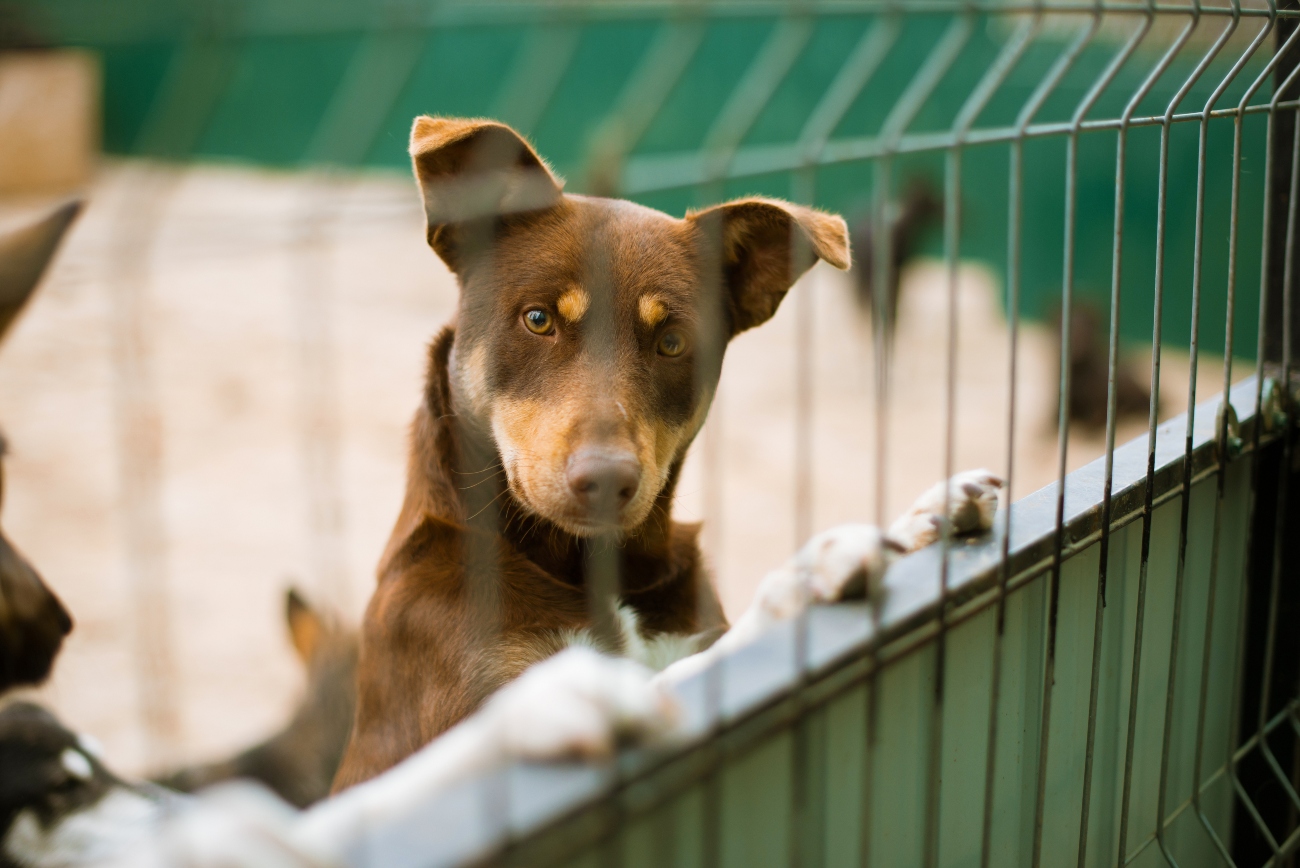How often you should worm a puppy & 19 other important health problems
4th August, 2022

They're adorable, doe-eyed and playful – and, thanks to their undeveloped immune system, puppies are also more susceptible to health problems than adult dogs.
In this article, we'll discuss some of the behaviours and illnesses that puppies can fall prey to. Essentially, these are 20 compelling arguments for some good dog insurance. You'll find some additional health issues to be aware of in our A-Z of dog health problems, parts 1 and 2.
If you spot any of these symptoms or behaviours, contact your vet as soon as possible as treatment may be required, and the sooner the better. Your insurance policy may be able to help with the costs of consultation, treatment and/or medicines, so it’s always a good idea to take dog insurance cost into account when planning your monthly budget.
1. Worms
Worms are one of the more common parasites – micro-organisms that commonly live on or inside dogs and puppies. Most parasites, including worms and fleas, can also be transmitted to humans.
Worms can enter your dog's system when your pet swallows a flea. They may do this while chewing at skin that has been irritated by flea bites – or simply from licking or grooming their fur. If the fleas that your dog ingests are themselves infected with tapeworms, there is a high chance that the dog may also become infected.
What evidence should you look for? Well, you may see pieces of these worms around your dog's bottom. They will look a bit like small grains of white rice. They may even appear to be moving. In fact, these are small bundles of tapeworm eggs: once the outer casing of these packets dries out, the eggs are released into the environment where the cycle can be repeated.
A puppy will be more sensitive to parasites, whether internal or external, than an adult dog. Regular preventative treatments, such as flea and worm treatments, are essential here.
2. Fleas
Those fleas that we mentioned above are, of course, another very common parasite in dogs of all ages. Unlike worms, they are an external parasite, living amongst your dog's fur. But that doesn't make them any less of a nuisance. Indeed, fleas can cause itching and inflamed skin. They can even induce allergies in your dog so they also need to be taken seriously.
It's important to keep up with your schedule of flea prevention treatment. This may be in the form of a chew or pill; a 'topical' solution (applied to a specific point on the body); or even a flea collar. Whatever treatment your vet recommends, make sure you keep up to date with the schedule.
How do you spot fleas? The most obvious behaviour will be lots of scratching. You may also want to check their fur, as fleas leave behind a substance that most resembles black dandruff. If regular flea treatment is not working, you may need to take your dog to the vet as more aggressive anti-flea treatment may be required.
3. Flea allergy dermatitis
First among a trio of flea-borne diseases that can affect puppies is flea allergy dermatitis (FAD). Caused by flea bites, this condition is relatively common in dogs. Its symptoms include intense skin irritation and itchiness. This may extend well beyond the original site of the bite(s). There may also be some visible hair loss. Once again, a vet will be able to advise on the correct treatment.
4. Anaemia
A large number of fleas all feeding on your dog at the same time can result in anaemia – a condition in which insufficient numbers of red blood cells are being produced. This condition can quickly become serious – especially in puppies, whose immune systems are low and whose health is particularly sensitive to fluctuations like these.
A puppy suffering from anaemia will appear weak and lethargic. Their breathing will become more rapid. Sadly, this could be fatal if not treated. Once again, seek treatment as soon as possible. If the flea infestation has been severe, you should use a suitable flea treatment around the home.
Fleas like nestling in bedding and furniture mostly; anywhere where there are small cracks will be a great hiding place for flea. It’s typically better to keep on the lookout for fleas in the warmer, summer months as they tend to live and breed in warm and moist environments.
5. Bartonellosis
The last in our trilogy of flea-borne diseases is this condition, caused by the bacterium bartonella. Fleas seem to be the way in which this bacterium is introduced into dogs. The condition itself can bring with it a number of symptoms in dogs including fever, nausea and reduced appetite. You may also observe an irregular heartbeat, plus vomiting and diarrhoea and maybe even joint pain.
6. Ticks
Like fleas, ticks are an external parasite that, as a puppy owner, you should be aware of. These little mites feed on animal and human blood, and can also transmit diseases such as Lyme disease – of which more in a moment.
There are certain times and places when your pup will be more at risk of tick infection. These little creatures prefer milder weather, so are most prevalent in the spring and summer. They’re generally found in woodlands, long grass, and areas with plenty of wildlife. Woods or parklands with resident herds of deer, for example, are high-risk areas for ticks in summertime.

If you do find a tick on your pet, it’s important to remove it quickly and thoroughly, so that none of it is left behind. There's some good, step-by-step advice on tick removal (which requires a small specialist tool) on the PDSA website. The MSD Animal Health website, meanwhile, has a useful interactive UK map showing areas where ticks are more or less widespread. Beyond this, you can reduce the risk of ticks by avoiding long grass and keeping to paths or open spaces.
7. Lyme disease
This disease is caused by a bacterium, borrelia burgdorferi, and is transmitted via tick bites. Both humans and domestic animals are susceptible.
In fact, several species of ticks are known to transmit Lyme disease – but the commonest transmitter species is the tiny deer tick, or black-legged tick. The ticks are not themselves the cause of the disease, merely the carriers.
Once a tick becomes attached to the skin of a host animal, it will take one or two days for the bacterium to be transferred onto the animal. That means that, if your puppy does get a tick bite, it's essential to remove it as quickly as possible.
If your dog is unfortunate enough to develop Lyme disease, they are likely to show some of the following signs:
- Loss of appetite
- Intermittent lameness
- Fever
- Swollen or painful joints
- Swollen lymph nodes
- Lethargy
Treatment at this stage is urgent as, if left untreated, Lyme disease can result in damage to the heart, kidneys, and nervous system.
8. Ehrlichiosis
Another tick-borne disease, ehrlichiosis is caused by a bacterium, ehrlichia canis, that is transferred from ticks to host animals. The particular tick that transmits this bacterium is not native to the UK. However, it can survive in warm and damp environments, such as kennels.
Ehrlichiosis brings with it a range of symptoms, varying from fever and lessened appetite to enlargement of the lymph nodes. A particular feature of this infection is that symptoms may present themselves, then disappear for a period of months or even years, and finally reappear in a more severe form.
Treatment for ehrlichiosis involves antibiotics. Luckily, the chances of your puppy contracting this particular disease here in the UK are small. However, the disease is able to spread through dogs coming into the country from abroad, and carrying an infected tick on their body.
9. Diarrhoea
This uncomfortable condition is quite common in puppies. It can range from a brief and mild episode that comes and goes within hours, to serious gastric problems.
Diarrhoea in puppies can have a variety of causes. Some common ones include a change in their diet – especially if this is introduced too suddenly – and the anxiety brought about by moving to a new home. Alternatively, your pup might develop diarrhoea from eating something harmful to them. Rubbish, toys, dirt and certain plants can all have this effect. Parasites such as worms, and certain infections such as parvovirus (see below) can also bring diarrhoea in their wake.
If your puppy or dog does develop diarrhoea, try to note down the date, time, and even the consistency. If it hasn’t cleared up within a day or two, contact your vet and share these details with them.
10. Kennel cough
This highly contagious respiratory disease is passed among dogs – both by direct contact, or through sharing water or food or water bowls. It can spread especially fast in kennels (hence the name), dog shows, or other environments where large numbers of dogs are in close proximity.
Kennel cough typically makes itself known through a harsh, dry cough. Your dog may also retch after a coughing episode. There are other symptoms, too, however: these include sneezing and discharge from the eyes and nose.

Unfortunately, younger puppies are more at risk than older dogs from this condition, as they won't yet have built up full immunity.
The good news, though, is that you can get your pup vaccinated against the disease. And indeed, any animal that routinely comes into contact with other dogs should be vaccinated against kennel cough. Bear in mind when calculating your dog insurance cost, it might not include routine vaccinations.
11. Parvovirus
Another highly contagious viral illness, parvovirus attacks the intestines and causes severe vomiting, diarrhoea and dehydration. It often leads to bleeding and can be fatal in some instances.
The virus is spread via particles in dog faeces, and unvaccinated puppies aged under six months are at particular risk. They will also, being at such a vulnerable age, be more seriously affected by the virus than older dogs.
A good hygiene regime is the best way to protect your pup from this disease. Be especially careful to pick up and dispose of their poop as hygienically as possible, as parvovirus can be spread by any animal or person that comes into contact with the faeces of an infected animal.
There's plenty more good advice around parvovirus on the relevant page of the PDSA website.
12. Arthritis
This condition, in humans at least, tends to affect sufferers later in life, so the idea of puppies contracting arthritis may seem unlikely. In dogs, however, arthritis can strike at any age. When it does, it is caused by joint dysplasia – a phenomenon in which the joints grow abnormally.
These are the dog breeds most at risk of arthritis – and the parts of the body where they are most likely to be affected:
- Golden Retrievers (hips)
- German Shepherds (spine, hips, elbows)
- Rottweilers, Labradors, Springer Spaniels and Bernese Mountain Dogs (hips and elbows)
Telltale signs include limping or lameness on any joints. Your pup may slow down on walks, and their walking might seem more laboured than natural. They are likely to be more lethargic than usual, and less keen to exercise. The pain may also make them more bad-tempered and/or sensitive, especially when they are touched or stroked in the affected areas.
Thankfully, there are many treatment options for canine arthritis, ranging from simple interventions such as anti-inflammatory painkillers, via complementary treatments such as hydrotherapy and mobility support, onto more specialist treatments such as joint replacement or stem cell surgery. The latter treatments will be expensive, but your dog insurance may help – something to bear in mind when considering dog insurance costs.
13. Heartburn
Also known as acid reflux, heartburn can be brought on after eating a high-fat meal. Common signs to look out for include vomiting, drooling and loss of appetite. If you suspect heartburn, you should take your puppy to be seen by a vet. They will probably use an esophagoscopy to confirm or rule out the condition.
If you have a dog insurance policy with us here at Purely Pets, you can call our 24-Hour Vet Helpline for advice.
14. Canine distemper
Quite a few of the health conditions we’re listing here are highly contagious – and, unfortunately, canine distemper is another of these.
This particular disease can be spread easily among dogs who share water or food bowls: it also spreads through the air. A puppy showing symptoms of vomiting, diarrhoea, twitching, paralysis, excessive discharge and fever could be suffering from canine distemper.
Unfortunately, like parvovirus above, the disease can prove fatal. Once again, however, a vaccine is widely available.
15. Leptospirosis
This condition has a different name – Weil's disease – when applied to humans. Whatever name it goes under, it's a lethal disease that can kill. Leptospirosis spreads via infected mice, rats, cows and dogs: it can also be caught from drinking water that carries the infection. If your dog lives on a farm, is given to killing rodents, or spends much time swimming, they will be at greater risk of contracting the disease.
Once again, a vaccination is available. Indeed, along with the vaccines for parvovirus, distemper and hepatitis, it's one of the four 'core' vaccines that all UK dogs should receive.
16. Vomiting
Our next entry is slightly different to some of the ones we've mentioned so far, in that this one isn't a condition in itself – rather, it's a behaviour that can be a sign of various different health issues.
You may already know that vomiting, in dogs or cats, can be a clue to quite a few different illnesses. However, in a puppy it should be taken more seriously than usual, as – being much smaller – puppies are at far greater risk of dehydration and/or critically low blood sugar (hypoglycaemia) after being sick.
For this reason, if your puppy vomits you should not hesitate to contact the vet, and to bring the puppy in for a check-up as soon as they are able to see you.
17. Mange
A painful and irritating skin condition, mange causes severe itching. It’s caused by mites that burrow under the surface of the skin, where they lay eggs – meaning that more mites will be on the way.
The most likely way for dogs to contract mange is through contact (or sharing their bedding) with other dogs. However, it can also be passed from a mother dog to her puppy. If the puppy's immune system is weak, the mange can develop more severely than usual.

If your puppy does develop mange, you will notice them scratching themselves a lot. They will also develop skin rashes, and may lose hair or fur. Their skin is also likely to crust over in places. In short, mange is a very unpleasant experience for your dog, and distressing for you to see: but the good news is that various treatments are widely available, and that mange typically disappears within a month or so.
18. Canine viral hepatitis
Formerly known as Rubarth’s disease, canine viral hepatitis is caused by the canine adenovirus Type 1, or CAV-1. It most commonly affects dogs and foxes. The disease, which affects the liver and some other major organs, can be passed on from infected dogs – via saliva, urine or faeces – or even from touching something that has had contact from an infected dog.
It's relevant here because young, unvaccinated dogs are most at risk of catching the disease. Indeed, very young puppies who contact canine viral hepatitis can die quickly. Thankfully, vaccination has had a considerable impact in reducing the spread of the disease here in the UK.
Symptoms to look out for include lethargy and enlarged lymph glands just below the jaw. Vomiting and/or diarrhoea may also occur, and some dogs with the condition find bright lights painful.
19. Glaucoma
This condition is caused by increased pressure inside the eye. If glaucoma is not properly treated, blindness can result. Although glaucoma can't be cured, it can be effectively managed via medication and eye drops, so a dog with glaucoma can still lead a perfectly happy, active life.
The earlier it can be diagnosed and treated, the more years of adequate eyesight your dog will enjoy. And even the fact that their eyesight will get worse shouldn't be too much of a concern. As we revealed in a piece on common signs that your dog's eyesight is deteriorating, dogs adapt well to reduced eyesight.
Severe cases of glaucoma will need emergency treatment, probably including some time at a veterinary hospital where your pup will receive anti-glaucoma medication to reduce the pressure within the eye. This will be expensive – but much of it could be covered by your dog insurance policy, so be aware of this when you weigh up dog insurance costs.
20. Urinary tract infections
More commonly known as UTIs, infections to the urinary tract are very common among puppies. What's more, they are often misdiagnosed by owners, who think that their puppy's frequent, uncontrolled urination is simply a behavioural problem.
Some of the typical signs of a UTI – peeing more frequently than usual, blood in the urine, licking the area more than usual – are also a feature of other conditions such as bladder inflammation and kidney disease.
If your vet believes a UTI or similar condition is present, they will probably carry out a urinalysis, in which they test your puppy's urine for acidity, blood, sugar, infection and other variables. The treatment of the condition will depend on the results of this test.
Give your puppy a good start in life with dog insurance
As the owner of a new pup, you may be wondering whether the dog insurance cost is worth it. But as we've seen, many of these common conditions can cost a lot of money to put right. That’s where dog insurance can step in.
Purely Pets Insurance customers benefit from:
- Free 24-Hour Vet Helpline
- Online policy management
- 15 levels of Lifetime Cover
Why not see how much dog insurance costs today?
Helpful Pages
Recent Posts

Why do Pugs lick the air?
02/10/24Pet Insurance Quote
- 98% claims paid *
- Claims paid directly to vets
- 24/7 vet video consultations
- Interest free monthly payments



